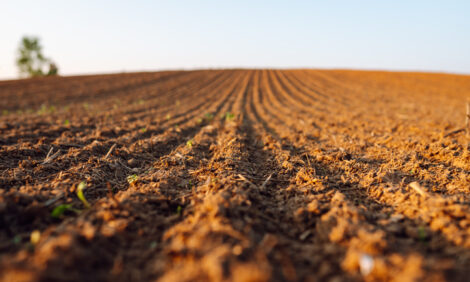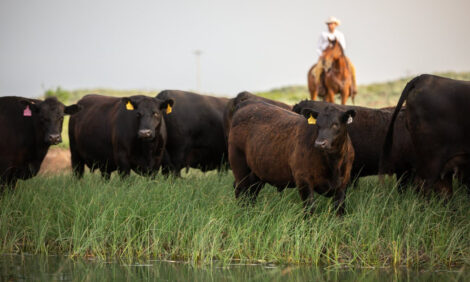



Setting goals and adding diversity are key for intercropping
There is a lot of buzz in beef and forage production systems around the concepts of sustainability and soil health and the numerous different production practices that can support those ideas.Innovative producers are seeking ways to work within their landbase to become more efficient and improve their soils, whatever that may mean to them on their farms. Intercropping is one strategy that may help them achieve their goals.
What is intercropping? Is it different from planting cover crops, interseeding, or relay crops? How does intercropping fit in for beef and forage systems?
The lines are blurry but the goals are clear
Manitoba producer Alan MacKenzie considers intercropping to be two crops that are grown at the same time to be harvested together. The Nesbitt area cow-calf producer has been an organic farmer for twenty years and has used intercropping on-and-off as a tool on his mixed farm for the past decade. “I would say the main benefit is just trying to get some diversity and anytime we can get some legume in the mix for the nitrogen, that’s good,” MacKenzie explains.
Some cash crop combinations he has tried include pea and mustard, a pea and oat mix, or wheat and flax, but he says there are numerous combinations that could work depending on the individual farm.
“I seed everything at the same time, same depth,” he says.
He mixes his seeds together in a mix mill and tries to choose an intermediate seeding depth to compromise different species’ requirements. MacKenzie also typically underseeds his cash crop mix to a forage “relay crop,” and usually seeds everything in one pass in the spring.
“Relay cropping opens extra things, I’ll throw in vetch or Italian ryegrass or sweet clover at the same time,” MacKenzie says.
He’ll harvest an intercrop of peas and oats for example, spread or bunch the straw, and then his cattle will graze the green forage crop that’s growing underneath in the fall. He says that some years it’s very dry and you don’t see the response, or sometimes some crops outshine the others, but this cattle herd always has access to good feed.
“If one of your goals is soil health, understand what aspect is important to you. Then find a measurement that is successful for you that you can follow over time to see if that investment is impactful to you.”
Researcher and professor Yvonne Lawley, PhD, based out of the University of Manitoba, says terms like intercrops, cover crops, and relay crops are often used interchangeably, however they are all strategies for intensifying how to utilize land to capture sunlight.
“I’m ok with the blurry lines and the confusion. The important thing is to think about what your goals are and what strategies are going to help you meet your goal,” Lawley explains.
“If one of your goals is soil health, understand what aspect is important to you,” says Lawley. “Is it infiltration? Nutrient cycling? Then find a measurement that is successful for you that you can follow over time to see if that investment is impactful to you,” she suggests. “If your goal is to provide more forage of whatever quality you need than that is an important measure.”
Lawley, an agronomy researcher, has teamed up with fellow University of Manitoba colleague Emma McGeough, PhD to evaluate corn intercropping systems for cattle grazing.
“Corn is a great winter feed crop because it has so much biomass and energy in a small amount of space, but the inherent problem with corn is that is has lower protein,” she says, adding that can be limiting when trying to graze different classes of cattle that have higher protein requirements.
Lawley and McGeough will study different species of intercrops with corn as well as two different fertility rates. McGeough will study how cattle perform on intercrops compared to corn alone and there are collaborative test sites set up in Alberta, Saskatchewan, and Manitoba.
The advantages of diversity
MacKenzie says that for their farm, diversity is about managing risk and not putting “all their eggs in one basket.” He says they seed a plow-down crop, such as sweet clover and vetch, every three years, terminating the crop by working it into the soil to incorporate organic matter and clean up weeds. It’s a versatile mix and adds that they sometimes divert the plough down crop for feed.
“We will benefit from that, utilizing that cropland as cattle feed that doesn’t cost a lot of money,” he explains. He also adds that having both crops and cattle is complimentary when it comes to utilizing screenings from seed cleaning and separation.
Lawley explains that seeding intercrops or cover crops can create multiple opportunities in the whole operation.
“From a livestock perspective you can grow forage for different windows and provide more options for grazing throughout the entire growing season,” she explains. “Are the crops for feed? For soil? In reality, it’s for both,” she says.
Balance hassle with reward
Every innovative production practice comes with a learning curve. Lawley says there is no one recipe and each farm has to individually decide what new change will lead to an innovative practice that will help the overall operation.
MacKenzie identified a few challenges, including separating crops after harvest.
“Make sure you have buyer acceptance,” he says, explaining that some buyers have stringent guidelines and may reject a nice sample of oats, for example, if they have a minimal amount of pea chips present.
He adds that cleaning seed is a fair amount of work and sometimes there may not be enough of a reward in the marketplace to offset the hassle. He’s experienced other learning curves, including a time when they used lentils in an intercrop mix somewhat unsuccessfully.
“Timing the species right is so important,” MacKenzie describes. “By the time the other crop was ready for harvest, the lentils had shelled out,” he says.
Accessing versatile equipment can be another frustration, Lawley says.
“Having equipment that allows you to easily intercrop either by adjusting rate on alternate rows or allowing you to have bins that you can set different rates on for different seed sizes,” she says. “Those become important if you’re doing this on a large scale or want to operationalize over large acres.”
“Another challenge may be getting connected to a group of intercroppers,” Lawley explains, which is helpful for producers looking to gain logistical information, share ideas, and learn from others’ experiences. She added that social media has been helpful in building new networks of farmers and enabling those conversations.
Overall, intercroppers are very observant. Lawley says they learn from successes but they also learn from mistakes.
“They learn from the failures and thinking through what went wrong, regrouping, pivoting, and moving forward,” she says. “The surprises are where a lot of learning is going to happen.”



